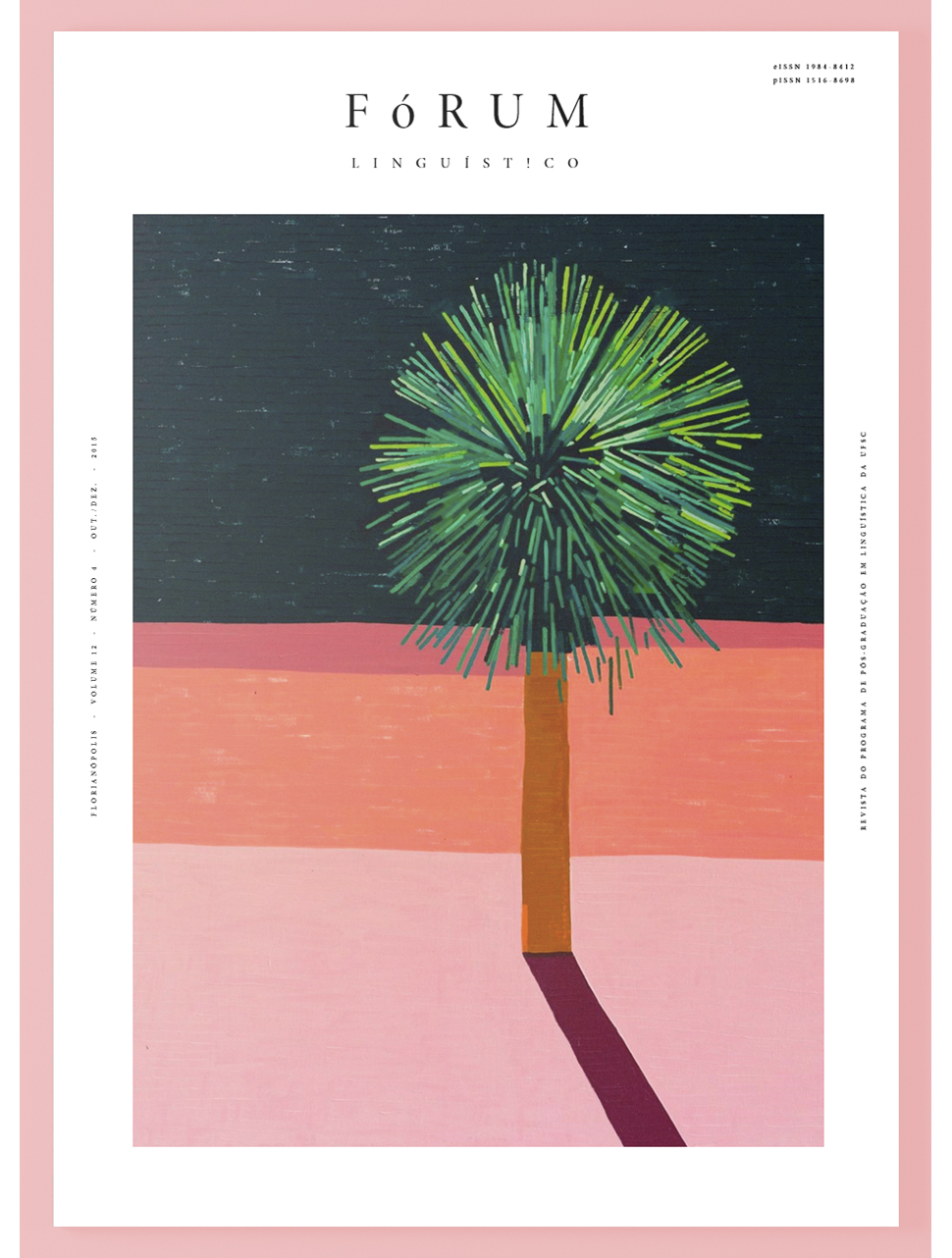Estudo histórico do complemento acusativo de 2ª pessoa do singular
DOI:
https://doi.org/10.5007/1984-8412.2015v12n4p900Resumo
O objetivo do presente trabalho é estudar a variação dos complementos acusativos de 2ª pessoa do singular (2P) ao longo de um século (1880-1980). Além do clítico te, previsto pela tradição gramatical, outras formas também podem ocorrer no português brasileiro, como o pronome você, os clíticos lhe e o/a e, até mesmo, o objeto nulo. Para tanto, parte-se de um corpus constituído por 504 cartas pessoais cariocas. Como aparato teórico-metodológico, utiliza-se a Sociolinguística Histórica (ROMAINE, 1982; CONDE SILVESTRE, 2007; HERNÀNDEX-CAMPOY; CONDE SILVESTRE, 2012). Em síntese, o estudo revelou que a estratégia acusativa mais utilizada foi o clítico te, independentemente do tratamento empregado na posição de sujeito (tu, você ou tu~você), em cartas familiares e amorosas e ao longo de todo o século em estudo.
Downloads
Publicado
Edição
Seção
Licença
Os trabalhos publicados passam a ser de direito da Revista Fórum Linguístico, ficando sua reimpressão, total ou parcial, sujeita à autorização expressa da Comissão Editorial da revista. Deve ser consignada a fonte de publicação original.
Esta publicação está regida por uma licença Creative Commons Attribution-NonCommercial-NoDerivatives 4.0 International License.



